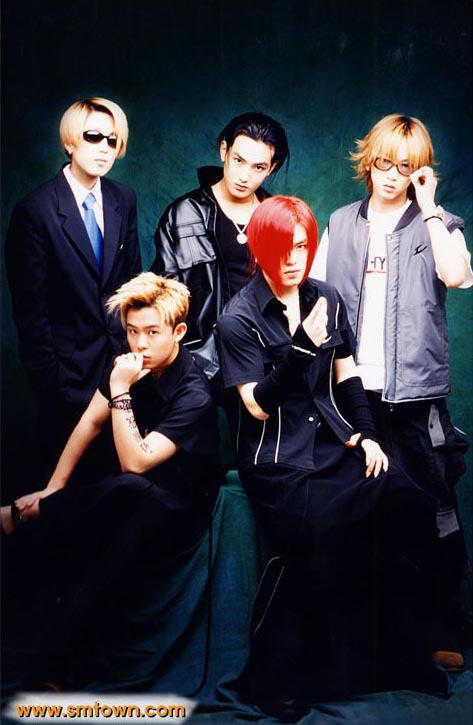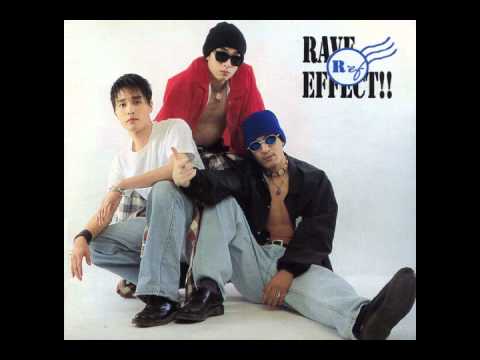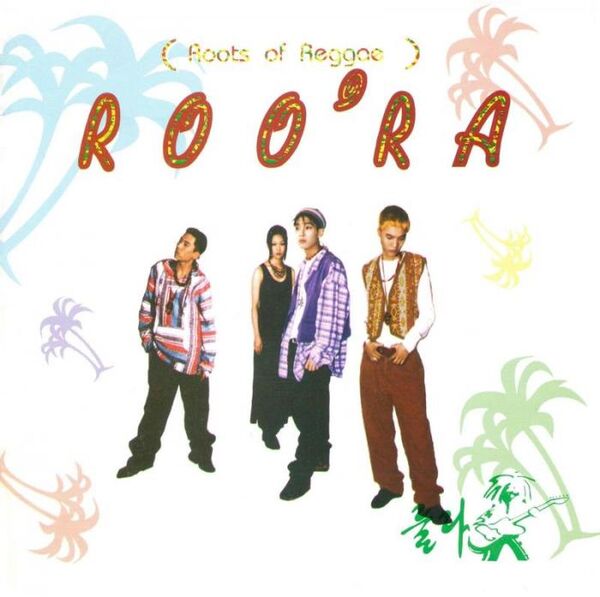In recent years, K-pop has expanded beyond its home country of South Korea and taken the world by storm. The K-pop industry is now worth billions of dollars and new groups are coming out all the time. All of these K-pop groups owe their success to their predecessors, who first emerged in the 1990s — the oldest group on this list came out in the late 1980s.
These first K-pop groups paved the way for today’s popular idols and established many of the signature features that K-pop groups are known for today. While most of the K-pop groups on this list have disbanded, a few have remained together for the past few decades or reunited in more recent years.
11. Baby V.O.X
Year Established: 1997
Years Active: 1997 – 2006
Original Members: Kim E-Z, Lee Hee-jin, Jang Hyun-jung, Cha Yu-mi (replaced by Kan Mi-youn), and Jung Shi-woon; (Shim Eun Jin and Lee Gai replaced Jang and Jung; Yoon Eun Hye replaced Lee Gai)
Current Members (if applicable): N/A
Label: DR Music

Baby V.O.X was another early K-pop girl group that debuted not long after S.E.S. The group initially consisted of members Kim E-Z, Lee Hee-jin, Jang Hyun-jung, Cha Yu-mi, and Jung Shi-woon. However, Cha Yu-mi was injured and replaced with Kan Mi-youn; Jang and Jung left and were replaced by Shim Eun Jin and Lee Gai; Gai lied to DR Music about her age (she was much older) and was replaced with Yoon Eun Hye.
After moving from a sexier style inspired by the Spice Girls – which was not received well due to Koreans being more conservative at the time — to a more cutesy style like S.E.S., Baby V.O.X saw success. Baby V.O.X released seven albums before breaking up in 2006.
Did You Know?
Since the first iteration of Baby V.O.X disbanded in 2006, DR Music has put together two more versions of the group: Baby V.O.X. Re.V (2007 – 2009) and most recently RaNia (2011 – Present).
10. S.E.S.
Year Established: 1997
Years Active: 1997 – 2002; 2016 – 2017
Original Members: Bada, Eugene, and Shoo
Current Members (if applicable): N/A
Label: SM Entertainment

Although there were a few co-ed groups in the early 1990s, S.E.S. (which stands for Sea, Eugene, Shoo) was the first K-pop girl group. S.E.S. was put together by SM Entertainment as the female counterpart to H.O.T. The group’s debut album sold 650,000 copies, becoming the best-selling album by a female group in South Korea.
S.E.S. kept producing hit albums until 2002. The group disbanded at the end of the year after Bada and Eugene failed to reach an agreement over their contract with SM; Shoo stayed with the label until 2006. In 2016, S.E.S. briefly reunited for their 20th anniversary. During their reunion S.E.S. released an album, held a concert, and did a reality show.
Did You Know?
In 2014, popular girl group Red Velvet, who are also with SM Entertainment, remade S.E.S.’s song “Be Natural.” It was Red Velvet’s second official single.
9. H.O.T.
Year Established: 1996
Years Active: 1996 – 2001; 2018 – Present
Original Members: Moon Hee-joon, Jang Woo-hyuk, Tony An, Kangta, and Lee Jae-won
Current Members (if applicable): Moon Hee-joon, Jang Woo-hyuk, Tony An, Kangta, and Lee Jae-won
Label: SM Entertainment

Although many groups came before them, H.O.T. is largely credited with being the first modern K-pop idol group. H.O.T. was part of the early days of SM Entertainment’s in-house production system, which has gone on to produce some of the most successful K-pop groups, including Red Velvet, Girls’ Generation, Shinee, f(x), Exo, and many others.
H.O.T. consisted of members Moon Hee-joon, Jang Woo-hyuk, Tony An, Kangta, and Lee Jae-won. The group stayed together from 1996 until 2001, following a contract dispute with SM Entertainment. This left many fans disappointed, but H.O.T. reunited in 2018 to independently put on a concert.
Did You Know?
During their initial career, H.O.T. sold over 6.4 million albums in South Korea and the group was also wildly popular in Japan and China.
8. Turbo
Year Established: 1995
Years Active: 1995 – 2001; 2015 – Present
Original Members: Kim Jung-nam and Kim Jong-kook; Mikey joined in 1997
Current Members (if applicable): all three members
Label: GM Agency during original run; and currently The Turbo Co.

Turbo was formed in 1995 to compete with popular hip-hop duo Deux. The original duo consisted of rapper Kim Jung-nam and singer Kim Jong-kook. Turbo quickly shot to fame and their dance music became immensely popular.
Unfortunately, this success was short-lived for the initial duo as troubles arose with management. In 1997, Kim Jung-nam left Turbo and Kim Jong-kook decided to find a new partner. Mikey, who had been living in the U.S. since he was six, ended up replacing Kim Jung-nam. The new Turbo was just as successful, but the group disbanded in 2001. In 2015, all three members of Turbo reunited for the group’s 20th anniversary and have been making new music since.
Did You Know?
Not long after Turbo reformed with Mikey, American actor/rapper/singer Will Smith picked Turbo to make an Asian version of “Just the Two of Us” (originally a Bill Withers song).
7. R.ef
Year Established: 1995
Years Active: 1995 – 1999; 2004
Original Members: Lee Sung Wook, Park Chul Woo, and Sung Dae Hyun
Current Members (if applicable): N/A
Label: Various

R.ef, short for rave effect, were brought together in 1995 to bring rave music to Korea, but the group also performed hip hop and ballads. The group consisted of singer Lee Sung Wook, rapper Park Chul Woo, and another vocalist Sung Dae Hyun.
R.ef stayed together until 1999 and their music evolved as the group aged. The group did get back together to release a single in 2004. Since 2015, there have been rumors that R.ef was planning a reunion to make a fourth album, however, there have been no updates since the initial announcement.
Did You Know?
R.ef’s most popular song, “Farwell Formula” was remade by K-pop idol group VIXX under the name “Love Equation” in 2015.
6. Roo’ra
Year Established: 1994
Years Active: 1994 – 1997; 1999, 2000, 2001, and 2009
Original Members: Lee Sang-min, Go Young-wook, Kim Ji-hyun, and Shin Jung-hwan; Chae Ri-na joined in 1995
Current Members (if applicable): N/A
Label: World Music Co.; A&B Productions; EMI Records; and Madang Dream

Roo’ra, which stands for Roots of Reggae, are another iconic co-ed K-pop group from the early 1990s. The original members of Roo’ra were Lee Sang-min, Go Young-wook, Kim Ji-hyun, and Shin Jung-hwan. A year after the group’s debut, Shin Jung-hwan left to fulfill his mandatory military service and was replaced with Chae Ri-na, who stayed with Roo’ra until group members went their separate ways in 1997.
The four most successful members of Roo’ra – Lee Sang-min, Go Young-wook, Kim Ji-hyun, and Chae Ri-na – did get back together to produce four more albums in 1999, 2000, 2001, and finally in 2009.
Did You Know?
In 1996, Roo’ra faced major controversy when it was revealed that the group sampled a Japanese song from a group called Ninja. Not only did Roo’ra pay proper attribution, but Japanese cultural products were also banned in South Korea at the time.
5. DJ DOC
Year Established: 1994
Years Active: 1994 – Present
Original Members: Lee Ha-neul, Jung Jae-yong, Kim Chang-yeol, and Park Jung-hwan
Current Members (if applicable): Lee Ha-neul, Jung Jae-yong, and Kim Chang-yeol
Label: various – iM Electronica; DMR; RIAK; Turning Hitz; Superjam Records; TEMPO; Snake Pit Records/Rapbay/Urbanlife Distribution; Dae Woo Record Co.

DJ DOC have been going strong since 1994, with all but one of the original members still part of the group. The group started out during a time when Korean hip hop was still underground, but DJ DOC eventually crossed over into the mainstream. DJ DOC became known for its provocative lyrics that criticized social injustices. The group’s songs have often been censored when aired on radio or television.
The original members of DJ DOC were Lee Ha-neul, Jung Jae-yong, Kim Chang-yeol, and Park Jung-hwan. After the release of DJ DOC’s first album, Park Jung-hwan left the group following a disagreement with the other band members.
Did You Know?
DJ DOC was one of fifteen artists or groups chosen to headline the medal ceremony aftershow for each day of the 2018 Winter Olympics.
4. COOL
Year Established: 1994
Years Active: 1994 – 2005; 2008 – Present
Original Members: Kim Sung-soo, Lee Jae-hoon, Yu Chae-young, and Choi Jun-myung
Current Members (if applicable): Lee Jae-hoon, Kim Sung-soo, and Yuri
Label: KT Music

COOL are a co-ed K-pop group that has been around since 1994. The original members of COOL were rapper Kim Sung-soo, leading male vocalist Lee Jae-hoon, and female vocalists Yu Chae-young and Choi Jun-myung. A year after COOL’s first album was released both of the original female singers left and were replaced by Yuri.
COOL went on to release numerous albums over the next decade and disbanded for a few years in 2005. However, COOL got back together – Kim Sung-soo, Lee Jae-hoon, and Yuri – in 2008 and have sporadically been making more music since.
Did You Know?
COOL has been around so long that the group has released a total of 17 albums, including “half albums.”
3. Deux
Year Established: 1993
Years Active: 1993 – 1995
Original Members: Lee Hyun Do and Kim Sung-jae
Current Members (if applicable): N/A
Label: K&C Music

Deux was one of the first K-pop group to feature various elements of hip-hop music and culture. The group’s two members, Lee Hyun Do and Kim Sung-jae first met when they worked as backup dancers for Korean rapper Hyun Jin-yung. Deux released four albums before breaking up in 1995 to pursue solo careers.
Deux is credited with popularizing hip hop-influenced choreography and fashion in the K-pop industry. They also introduced new jack swing to the country.
Did You Know?
One day after Kim Sung-jae made his solo debut, he was found dead in his hotel room, at the age of 23. Although the official reports say it was a possible drug overdose, many people still say foul play was involved and that Kim Sung-jae’s girlfriend at the time was responsible.
2. Seo Taiji and Boys
Year Established: 1992
Years Active: 1992 – 1996
Original Members: Seo Taiji, Yang Hyun-suk, and Lee Juno
Current Members (if applicable): N/A
Label: Bando Eumbam and Yedang Company

If you ask anyone familiar with K-pop history who the first idol group was, chances are they’ll say Seo Taiji and Boys. While Seo Taiji and Boys are largely responsible for popularizing the K-pop idol group concept, SoBangCha (who are No. 1 on this list) set the stage for all the groups that came after.
Group leader and namesake, Seo Taiji was initially a member of the heavy metal band Sinawe, but switched gears after the band broke up in 1992. The other two group members, Yang Hyun-suk and Lee Juno, were dancers who were moved by Seo Taiji’s music. Seo Taiji and Boys skyrocketed to fame and had a number of hits. The group disbanded in 1996 following a decision made by Seo Taiji.
Did You Know?
Seo Taiji and Yang Hyun-suk (aka YG) went on to have incredibly successful careers with Seo Taiji continuing to make music and YG forming YG Entertainment, one of the biggest record labels in South Korea.
1. SoBangCha
Year Established: 1987
Years Active: 1987 – 1990
Original Members: Taekyung Kim, Wonkwan Jung, and Sangwon Lee
Current Members (if applicable): N/A
Label: Daesung Enterprise (now DSP Media)

Although there probably aren’t too many people around today who know about SoBangCha, let alone remember the group, SoBangCha debuted in 1987 making them the oldest (and first) K-pop group ever in history. SoBangCha’s three original members were Taekyung Kim, Wonkwan Jung, and Sangwon Lee and the group was managed by Daesung Enterprise (now DSP Media).
SoBangCha quickly rose to fame and this was the first time that South Korean fans, especially young women, were exposed to a stylish group of men who sang catchy songs and danced. Unfortunately, Sangwon Lee left the group and while he was replaced, the SoBangCha quickly fizzled out by 1990.
Did You Know?
SoBangCha did try to make a comeback in 1994, when K-pop culture exploded, but the group could not keep up with the competition. They also released more music in 2005 and 2012, but received little attention.
OTHER POSTS YOU MAY BE INTERESTED IN











